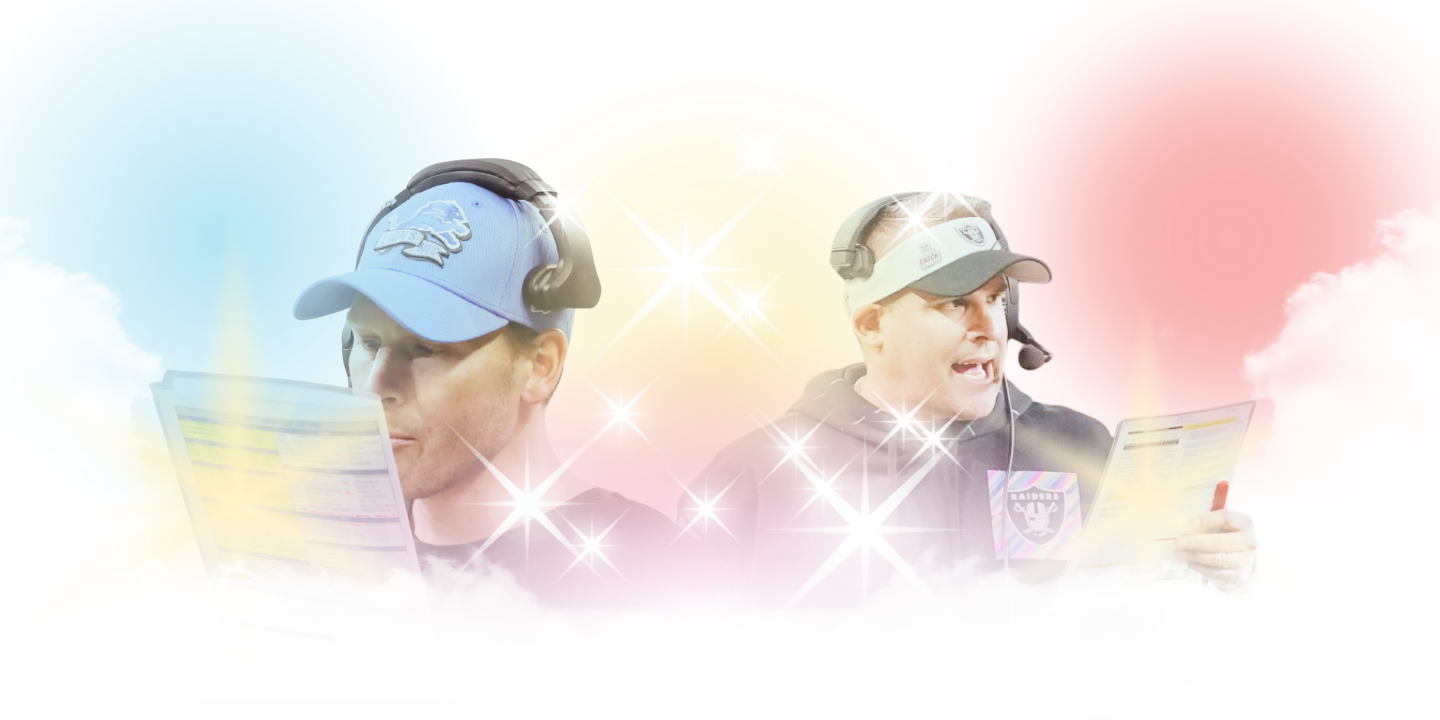There are three dominant schemes in the NFL: "West Coast, Air Coryell, and Erhardt-Perkins," as Chris B. Brown writes in his book, The Art of Smart Football.
"Given that every NFL team runs the same plays, each of these NFL offensive families is differentiated mostly by how these plays are communicated."
Starting with the passing game.
The Memory System
"The system is as old as football itself, which is no surprise given that Bill Walsh's onetime mentor Paul Brown is credited as much as anyone with inventing the modern conception of huddles, game plans, and play calls. For more than 30 years, it has been the dominant system in the NFL."
AKA — The West Coast Offense
How its plays are named:
- Running Plays are named using "the same two-digit numbering system that most NFL and college teams use," making it easier to learn the offense
- Passing Plays are named for the "primary receiver’s route, such as Z-In, X-Hook"
Rams offensive coordinator Mike LaFleur explains how he teaches his receivers the West Coast offense:
"Receivers, it's like a starting five in basketball. What I'm telling a Z-receiver might be so different than an X-receiver, that is so different than an F-receiver, and what I learned was, 'Man, don't try to tell the whole group everything.'
"Pick and choose your spots of, 'Hey, this is what the whole group needs to know.' Because they don't need to hear all of that information. They need to know what they need to know, and what's important to them, and what's going to help them be successful [in their specific role]."
But what if you don't want your receivers to be locked into specific roles? What if you want them to be interchangeable?
The Route Tree System
The Troy Aikman–era Dallas Cowboys frequently called a play called “896,” which told one outside receiver to run a [dig] route (“6”), the tight end to run a seam straight up the field (“9”), and the split end to run a skinny post (“8”).
In the 1992 NFC Championship Game, with the game on the line, Troy Aikman called "896" in the huddle and Michael Irvin ran away from his usual spot.
Nobody panicked. The Cowboys' scheme gave the receivers freedom to line-up in one of the three spots and run the route as called. Irvin lined up in the "6" instead of the "8." The reason? He wanted the damn ball; Aikman had been throwing to the "6" all game.
AKA — The Air Coryell Offense
The Aikman Cowboys were running their version of the Air Coryell offense.
- Origins "Named after former San Diego Chargers head coach Don Coryell and used by coaches such as Norv Turner, Ernie Zampese, and Mike Martz, the Air Coryell is built around the concept of the route tree," which uses 10 numerical digits (zero through nine; 0-9) to label the 10 branches on the route tree
- Route Tree Examples from Matt Harmon's Reception Perception
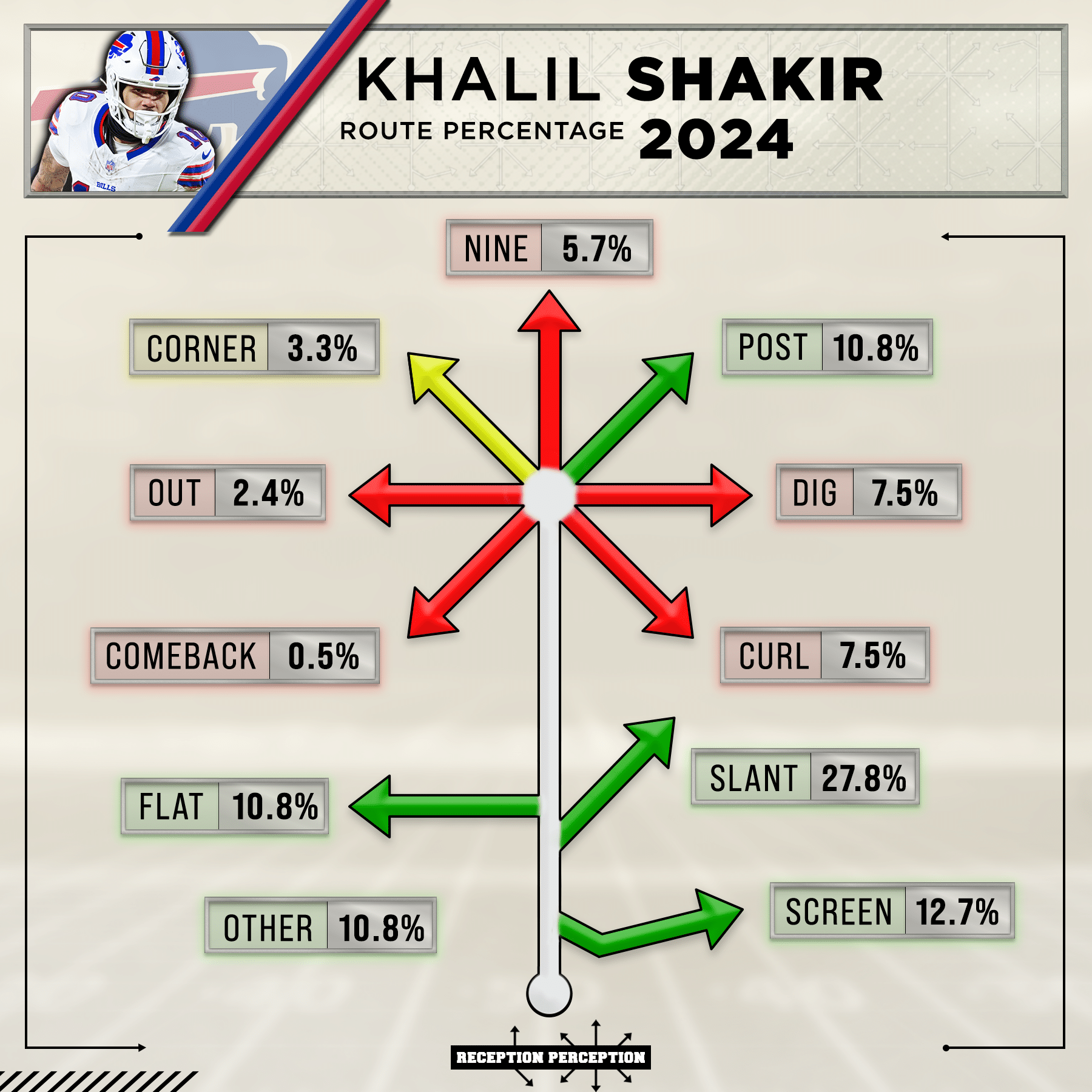
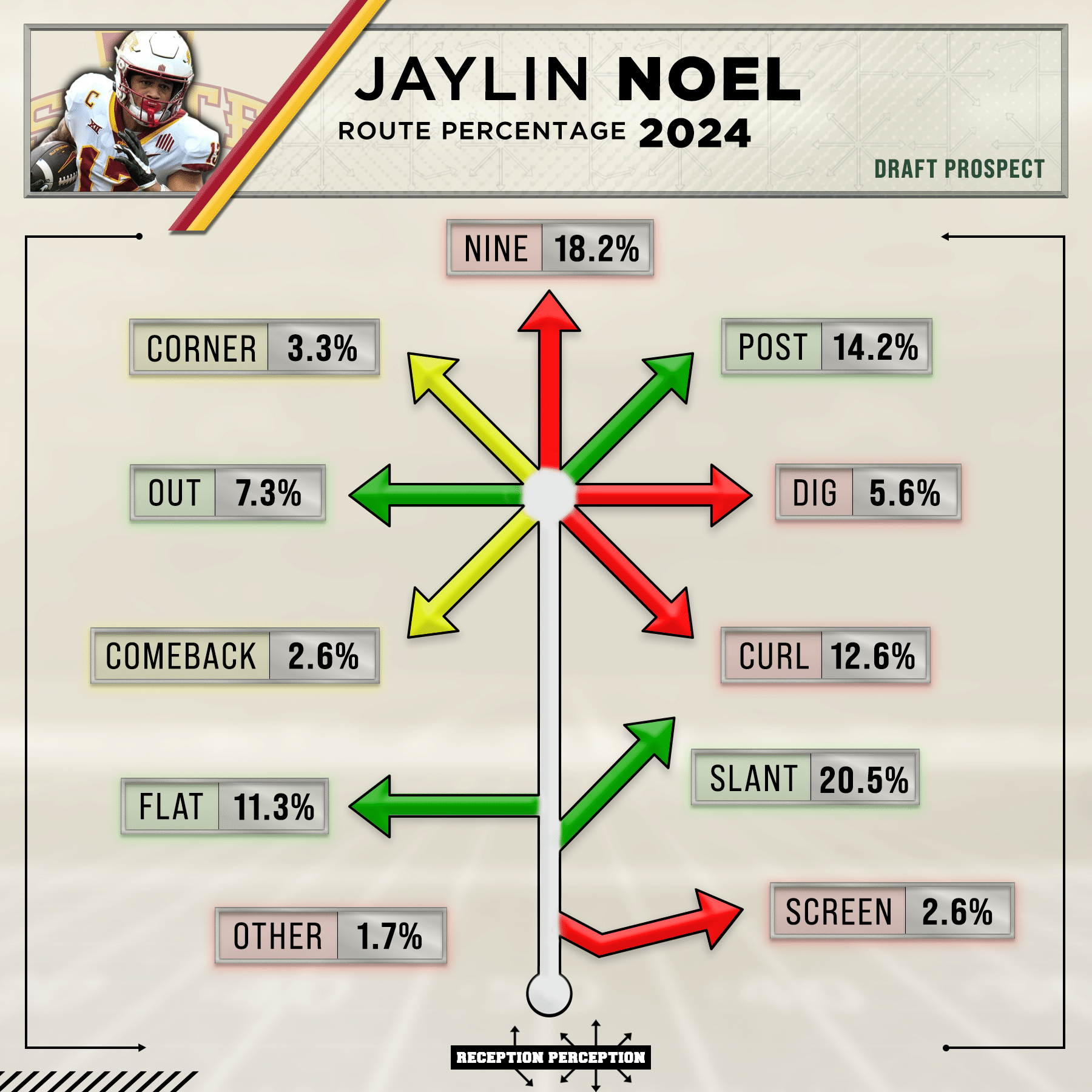
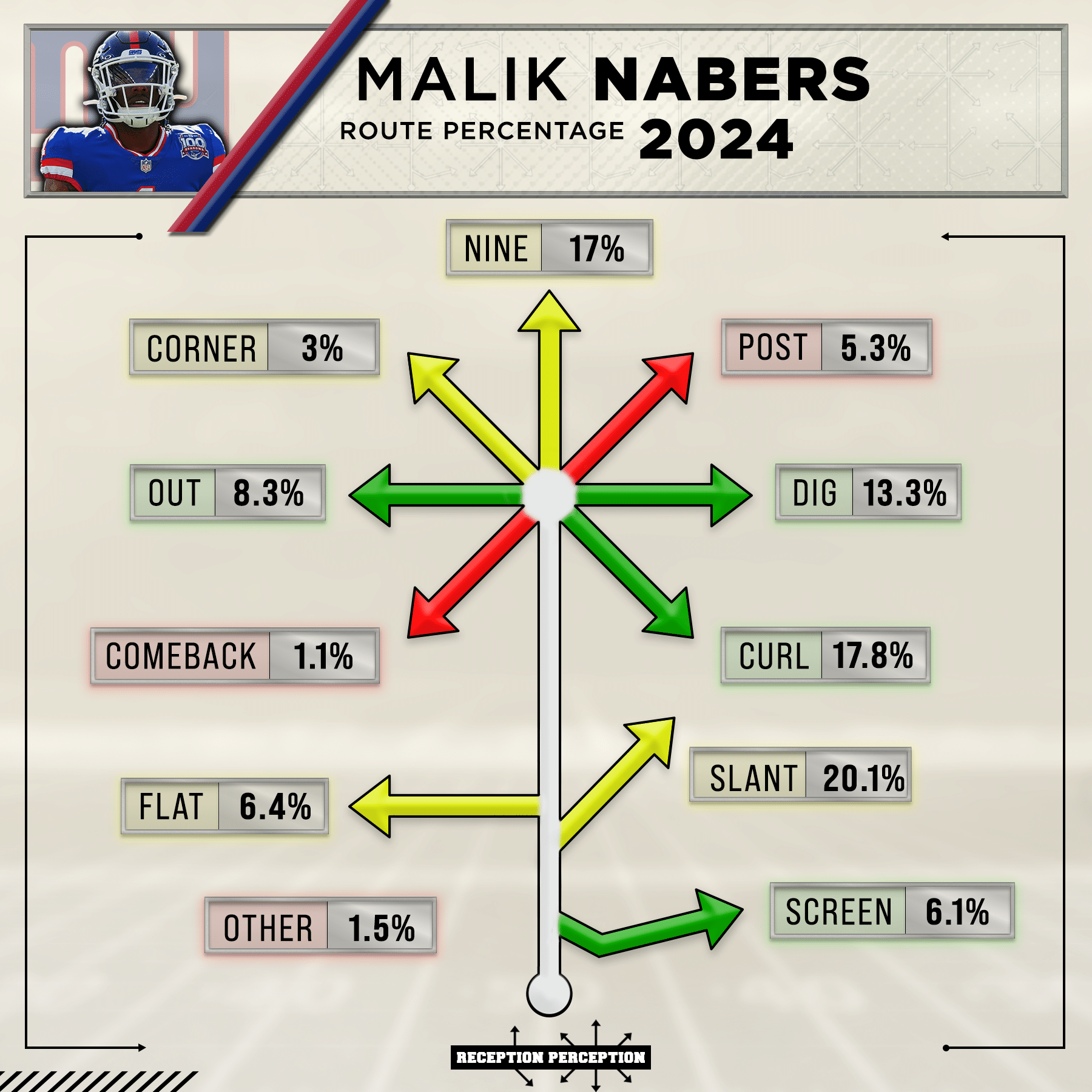
2024 Route Trees: Khalil Shakir, Jaylin Noel, Malik Nabers
In the graphics above, you'll notice that the routes have been named but in the lower-lefthand corner there's another box for some "other" routes. More than 10% of Khalil Shakir's routes were classified as "other."
"The route tree by definition only has 10 possible routes, much fewer than any NFL team actually runs. This means that any other route must be called by name, thus defeating the very purpose of having a route tree.
This effectively makes the Air Coryell system sound a lot like current West Coast play calls, which have no organizing principle and have morphed into monstrosities like:
Chris B. Brown continues:
The advantage of a play call like this (posted again below) is that it informs a player of his job better than other systems do. The disadvantage is that it’s excessively clunky, and plays that are conceptually the same can have wildly different calls.
In this play call, for example, the back would hear the word "Texas" and know he's supposed to run an angle route (also known as the Texas route) out of the backfield, past the line of scrimmage, and break toward the middle of the field.
Of course the entire call, when said aloud, sounds like gobbledygook.
But as long as coaches have taught the players their roles, the call should develop as drawn when the offense lines up and each piece fits into the puzzle.
The West Coast and Air Coryell offenses put more stress on the quarterback but provide more relief for the other players who just need to learn their specific role.
Given that, it's easy to see why more than 75% of NFL offenses prefer calling plays in a manner that can be boiled down to the familiar refrain: "Do your job."
Placing all that responsibility on one man's shoulders comes with a big-time benefit: it substantially lowers the inherent risk of asking all players to know each of their teammates' assignments on every single call in the game plan.
The Know-It-All System
AKA — The Erhardt-Perkins Offense
"Pass plays are not organized by a route tree or by calling a single receiver’s route, but by what coaches refer to as 'concepts.'
Each play has a name, and that name conjures up an image for both the quarterback and the other players on offense.
And, most importantly, the concept can be called from almost any formation or set. Who does what changes, but the theory and tactics driving the play do not."
Go on...
“You can cut down on the plays and get different looks from your formations and who’s in them. It’s easier for the players to learn. It’s easier for the quarterback to learn,” said former Patriots offensive coordinator Charlie Weis.
Fewer plays take less time to learn, in theory...
"The biggest advantage of the concept-based system is that it operates from the perspective of the most critical player on offense: the quarterback. In other systems, even if the underlying principles are the exact same, the play and its name might be very different. Rather than juggling all this information in real time, an Erhardt-Perkins quarterback only has to read a given arrangement of receivers.
Ah, yes, the almighty quarterback.
To recap:
- First, every player on offense needs to learn the concept
- Not just their role — everyone's role
- Then they need to know how the concept looks in different formations
- How it morphs in different sets
- (Still on Step 1): Players need to know both their role and any other role they could fill in the concept
- And how those roles may shift in different formations and sets
- On top of that, they need to know everyone else's role, too, not just the ones they could fill
- In all the different formations; in all the different sets
- Step 2: They have to recognize the concept on game day when the quarterback says a code word or possibly barks it over crowd noise while running the hurry-up offense
- The code word needs to conjure the same image in each player's mind – and it needs to be deciphered and processed by all 11 players in an instant — to execute the concept successfully
- Step 3: Repeat these instructions for every concept in the offense
Which Scheme Is the Most Successful?
On every team's Pro Football Reference page, in the table of contents at the top, you can see what offensive scheme they ran during a given season. Even though Chris B. Brown published the article I've been citing back in 2013 (and later republished it as a chapter in his book in 2015), the three dominant schemes remain the same today and most teams are still running a West Coast offense.
Ahead of the 2025 season, I've thought a lot about continuity in coaching staffs and offensive lines and wanted to do the same for scheme.
I tallied up the offensive schemes that each team ran from 2022-24 using their Pro Fooball Reference pages and then dug into Sports Info Solutions to look at the advanced stats and see what I could find.

- 32 teams across three seasons = 96 schemes
- 63 teams ran a West Coast offense (65.6%)
- 15 teams ran an Erhardt-Perkins offense (15.6%)
- 14 teams ran an Air Coryell offense (14.6%)
Three teams ran a spread offense (Kliff Kingsbury in Arizona '22 and Washington '24; Ryan Grubb in Seattle '24) and one team ran an option offense (Greg Roman in Baltimore '22).

For the most part, nothing's jumping out in the advanced stats. I like Sports Info Solution's catchable targets stat, because it provides a more accurate snapshot by eliminating things like throwaways, spikes, or QB-WR miscommunications.
Perhaps most striking across the board is that there's only a reception made on fewer than 14% of routes run. (Kind of makes you feel a little bit differently about Michael Irvin wanting the damn ball, doesn't it?)

Rushing is more of the same, with the exception of QB rushing being a little bit higher in the Erhardt-Perkins and Air Coryell schemes. This is mostly noise, though, as Josh Allen and Daniel Jones have played in the Erhardt-Perkins system while Lamar Jackson and Jalen Hurts have played in the Coryell.

Perhaps the biggest takeaway could be from a fantasy angle, where you're looking for bye week fill-ins and potential dart throws in your flex.
- Tight Ends run more routes and see more targets in West Coast offenses. This is noteworthy because the scheme is so dominant that a player like Travis Kelce can't notably alter the stats when they're broken down at this level.
- Running Backs see a higher percentage of targets per route run in Erhardt-Perkins offenses, which makes sense because players are asked to line up across the formation in different roles, particularly in hurry-up, two-minute, or trailing game scripts.
- Wide Receivers in Air Coryell offenses tend to see a few more deep shots per game, making them viable dart throws in a pinch.
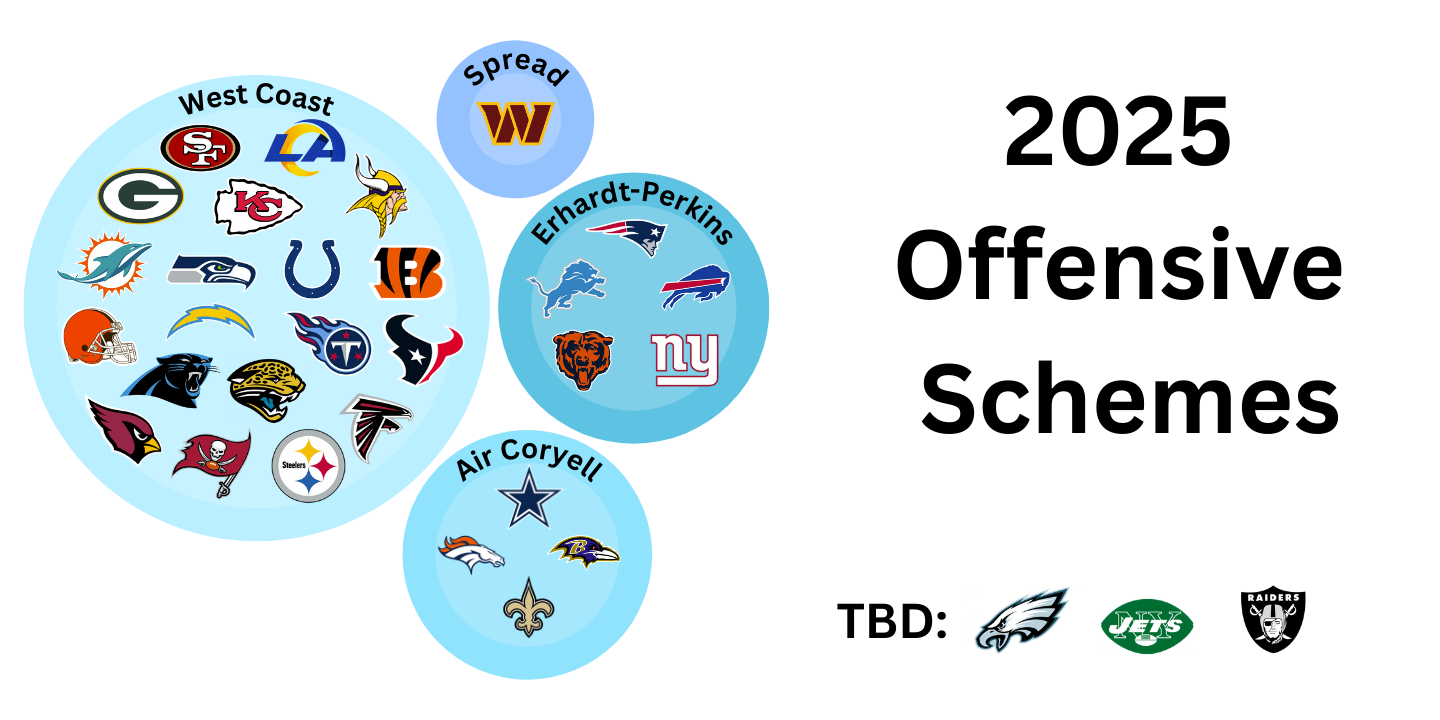
Potential streaming options to monitor during the 2025 fantasy season:
- Tight End: Brenton Strange, Jonnu Smith, Tyler Higbee, Chig Okonkwo, Dalton Schultz, Kyle Pitts, Pat Freiermuth, Mike Gesicki, Cade Otton, AJ Barner, Harold Fannin Jr., Tyler Conklin, Cade Stover, Ja'Tavion Sanders, Darren Waller, Terrance Ferguson, Gunnar Helm, Noah Fant, Elijah Arroyo, Noah Gray, Tommy Tremble, Will Dissly, Tip Reiman, Oronde Gadsden II, Mitchell Evans
- Running Back: Cam Skattebo, Ray Davis, Rhamondre Stevenson, Kyle Monangai, Ty Johnson, Roschon Johnson, Antonio Gibson, Craig Reynolds, Devin Singletary, Sione Vaki
- Wide Receiver: Rashid Shaheed, Rashod Bateman, Marvin Mims, DeAndre Hopkins, Troy Franklin, KaVontae Turpin, Jalen Tolbert, Brandin Cooks, Devontez Walker
- Bonus: Jaylin Lane in the Washington Commanders' spread offense
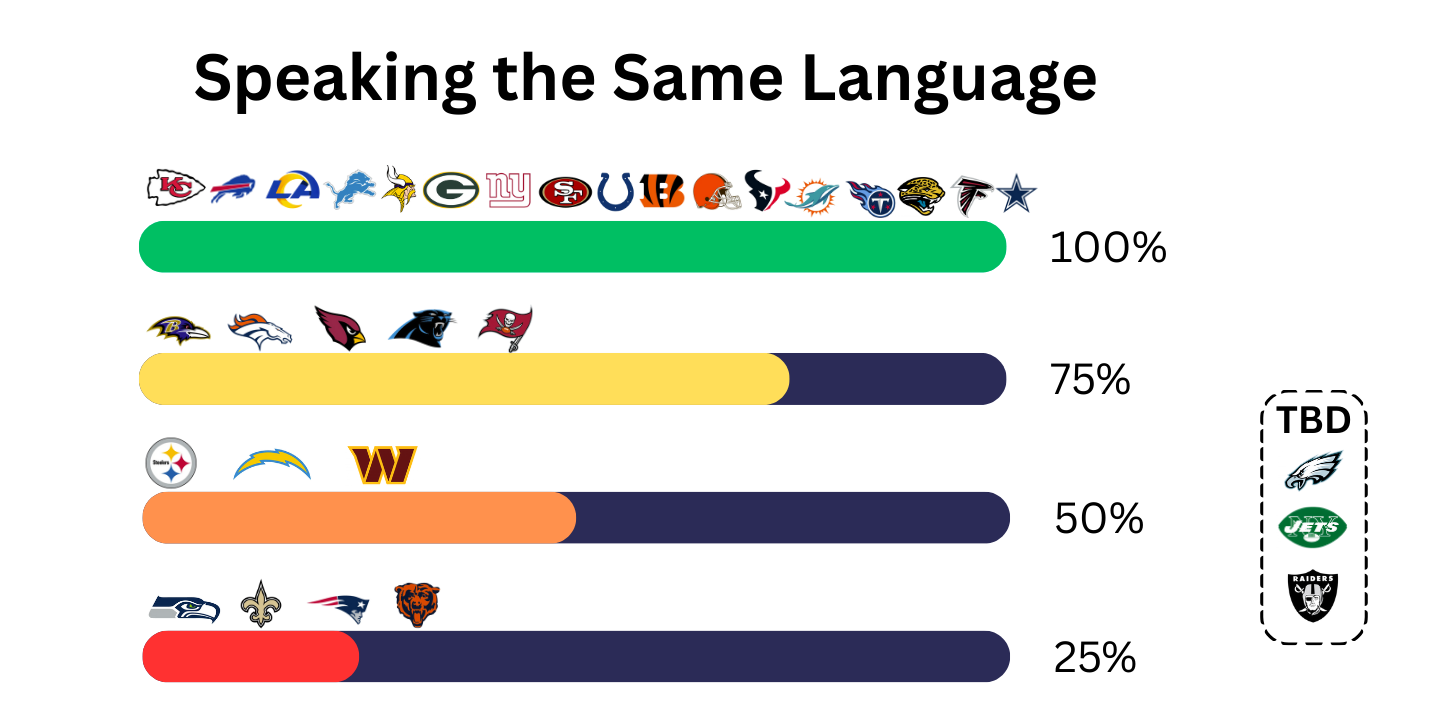
The Eagles, Jets, and Raiders offenses remain a relative schematic mystery on kickoff weekend of the 2025 NFL season. However, I feel pretty confident in projecting the 2025 scheme of the other 29 teams, and can wrap up the continuity standings with this final third of the equation.
One nice thing about coaching changes is that incoming staffs have the opportunity to preserve continuity by keeping the previous scheme in place, and thus making communication easier across the board.
It's fair to say an offensive coordinator should be able to adapt to schematic language and communication more than all of his players, and it would be wise to consider that, particularly for a new coaching staff, and even more particularly for a first-time head coach.
Nevertheless, here's a quote from Rome Odunze about the Chicago Bears new Erhardt-Perkins scheme:
"I feel comfortable with what we've put in. I know Ben Johnson's offense isn't something that you're going to completely and totally fully understand in Year 1. It's something that kind of takes a little bit of evolving to get there."
2022-24 NFL Continuity Standings
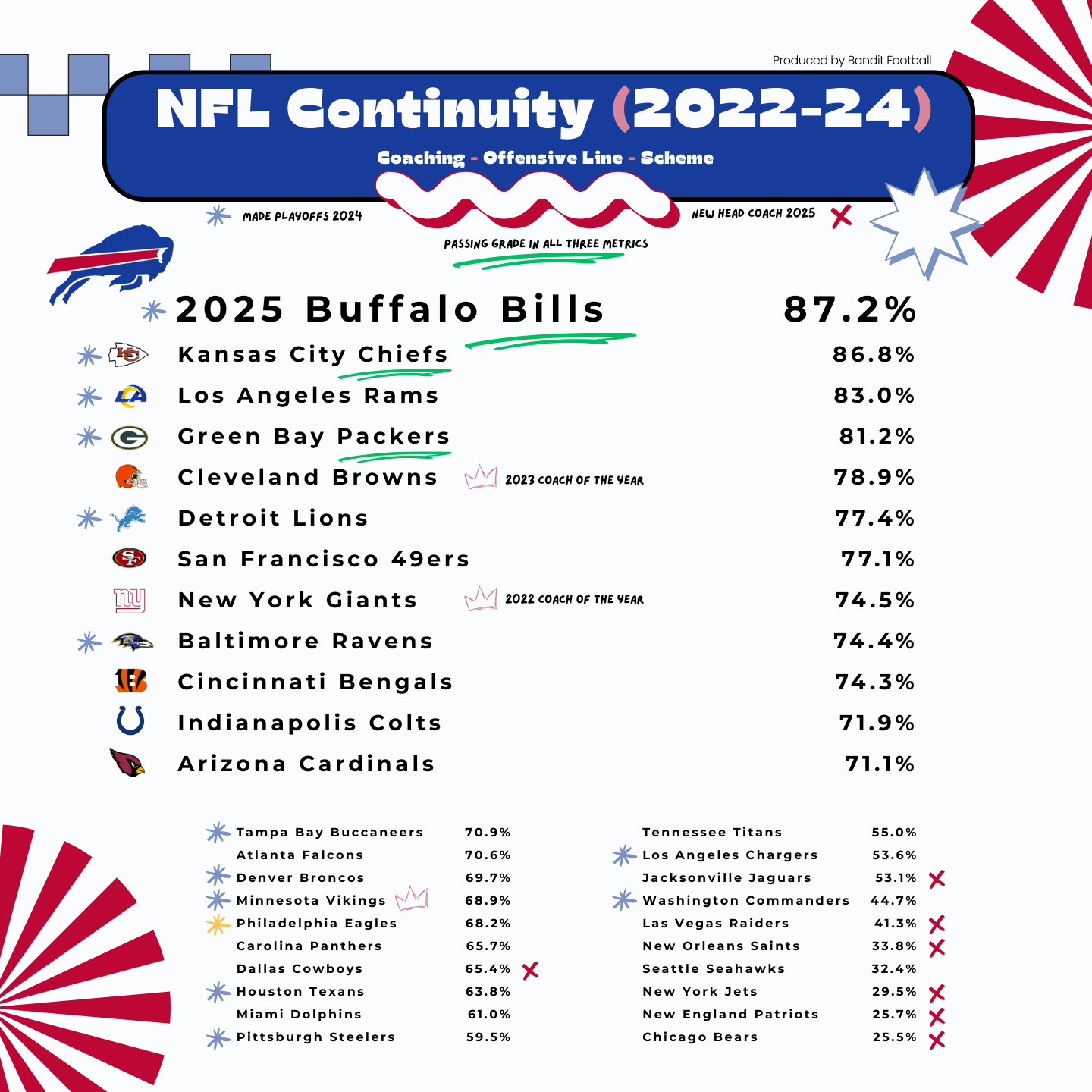
- Buffalo Bills — 87.2%
- Kansas City Chiefs — 86.8%
- Los Angeles Rams — 83.0%
- Green Bay Packers — 81.2%
- Cleveland Browns — 78.9%
- Detroit Lions — 77.4%
- San Francisco 49ers — 77.1%
- New York Giants — 74.5%
- Baltimore Ravens — 74.4%
- Cincinnati Bengals — 74.3%
- Indianapolis Colts — 71.9%
- Arizona Cardinals — 71.1%
- Tampa Bay Buccaneers — 70.9%
- Atlanta Falcons — 70.6%
- Denver Broncos — 69.7%
- Minnesota Vikings — 68.9%
- Philadelphia Eagles — 68.2%
- Carolina Panthers — 65.7%
- Dallas Cowboys — 65.4%
- Houston Texans — 63.8%
- Miami Dolphins — 61.0%
- Pittsburgh Steelers — 59.5%
- Tennessee Titans — 55.0%
- Los Angeles Chargers — 53.6%
- Jacksonville Jaguars — 53.1%
- Washington Commanders — 44.7%
- Las Vegas Raiders — 41.3%
- New Orleans Saints — 33.8%
- Seattle Seahawks — 32.4%
- New York Jets — 29.5%
- New England Patriots — 25.7%
- Chicago Bears — 25.5%
Sources
"Speak My Language" by Chris B. Brown https://grantland.com/features/how-terminology-erhardt-perkins-system-helped-maintain-dominance-tom-brady-patriots/
The Playcallers podcast: https://podcasts.apple.com/us/podcast/the-playcallers/id1696506932?i=1000664323477
Rome Odunze quote: https://x.com/CourtneyRCronin/status/1949149463639187806


